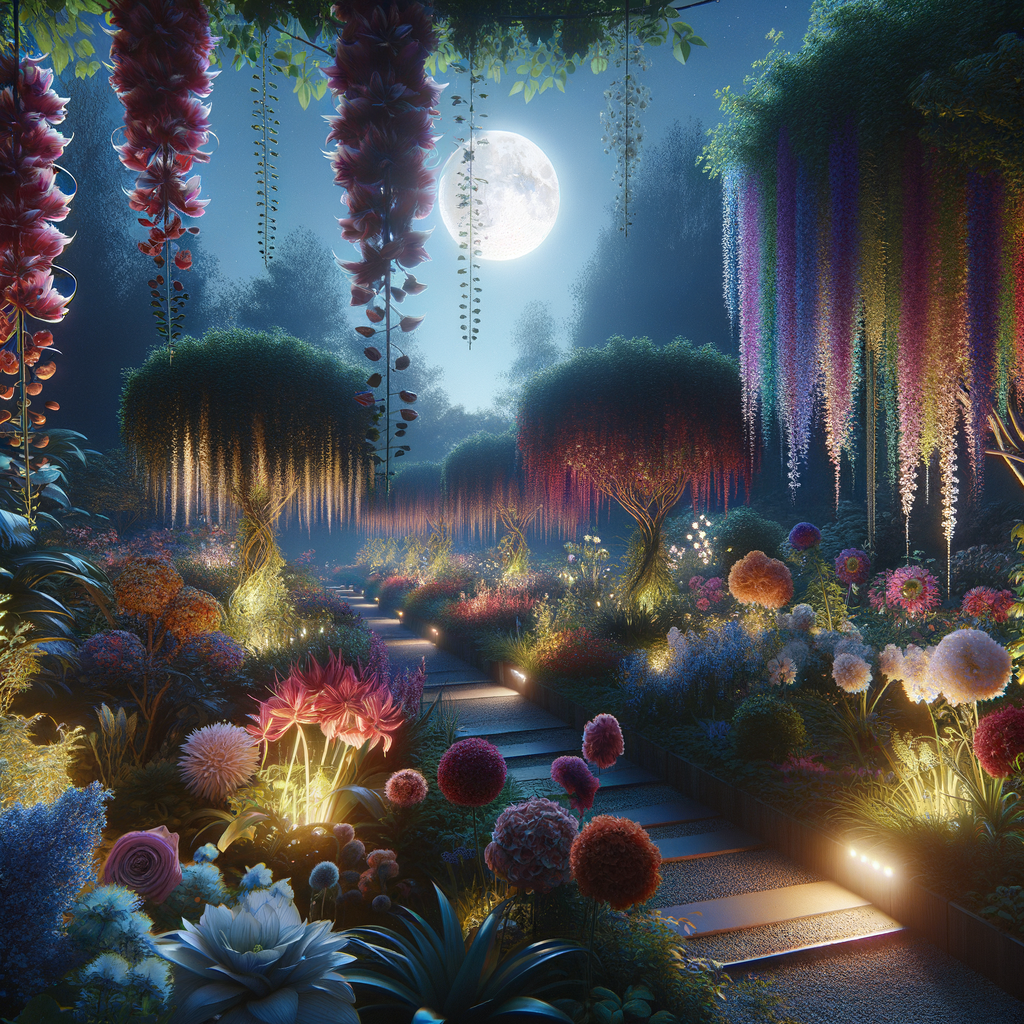
Introduction to Night-Blooming Plants
Have you ever wondered about the secret life of plants when the sun goes down? Some plants, known as night-blooming plants, come alive in the moonlight. Let’s explore these fascinating plants and the mystique of their night flowers.
- Definition of Night-Blooming Plants
- The Mystique of Night Flowers
Night-blooming plants, also known as nocturnal plants, are a special group of plants that bloom or open their flowers only when the sun has set. They are unique and different from most plants that bloom during the day. These plants have adapted to pollinate at night, often attracting nocturnal creatures like bats and moths.
Night flowers hold a special mystique. They are often associated with mystery and magic due to their unusual blooming habits. Many night-blooming plants have large, white or light-colored flowers to reflect the moonlight and strong, sweet scents to attract their nighttime pollinators. Some of these plants, like the Moonflower or the Night-Blooming Jasmine, are famous for their enchanting beauty and intoxicating fragrance.
Understanding night-blooming plants and their flowers can open up a whole new world of botany for you. It’s like discovering a secret garden that only reveals itself under the cloak of darkness. So, the next time you find yourself under the moonlight, take a moment to appreciate these nocturnal wonders of nature.
The Science Behind Nighttime Botany
Let’s delve into the fascinating world of nighttime botany. This branch of science explores how plants adapt and thrive when the sun goes down. It’s a complex, yet intriguing subject that combines elements of biology, ecology, and horticulture.
Understanding the Biological Clock of Plants
Just like humans, plants have a biological clock that helps them identify when it’s time to rest or get active. This internal timekeeper is influenced by various factors, including light and temperature.
- How plants perceive time: Plants use a combination of light and temperature cues to determine the time of day. This allows them to adjust their growth and behavior accordingly.
- The role of light in plant behavior: Light plays a crucial role in plant behavior. It influences when plants open their flowers, when they release their scent, and even when they grow.
- Adaptation to nocturnal pollinators: Some plants have adapted to bloom at night to attract nocturnal pollinators like moths and bats. This helps them increase their chances of reproduction.
- Survival strategy in harsh climates: Nighttime blooming can also be a survival strategy in harsh climates. By blooming at night, plants can conserve water and avoid the harsh daytime heat.
- Queen of the Night (Selenicereus grandiflorus): This cactus species is famous for its large, fragrant flowers that bloom only once a year, at night.
- Night Blooming Jasmine (Cestrum nocturnum): Known for its intoxicating fragrance, this plant’s flowers open only after sunset.
- Moonflower (Ipomoea alba): As its name suggests, this plant’s large, white flowers bloom at night and close up during the day.
- Evening Primrose (Oenothera biennis): This plant’s yellow flowers open in the late afternoon or early evening, attracting pollinators like bees and moths.
- Considering your climate and soil type: When choosing night-blooming plants for your garden, consider your local climate and soil type. Some plants may require specific conditions to thrive.
- Pairing night-blooming plants with daytime bloomers: To create a garden that’s vibrant around the clock, consider pairing night-blooming plants with daytime bloomers. This can create a beautiful contrast and ensure there’s always something in bloom.
- Using light and shadow for dramatic effect: The strategic use of outdoor lighting can highlight your night-blooming plants and create a dramatic effect in your garden.
- Incorporating water features and wind chimes: Adding water features and wind chimes can enhance the sensory experience of your night garden.
- Understanding the unique watering needs of night-bloomers: Night-blooming plants often have unique watering needs. Some may require more water, while others may need less.
- Choosing the right fertilizer: Just like watering, different plants may require different types of fertilizer. Make sure to research the specific needs of your plants.
- When and how to prune your plants: Pruning is an important part of plant care. It helps keep your plants healthy and encourages more blooms.
- Dealing with pests and diseases: Night-blooming plants can attract certain pests or be prone to specific diseases. It’s important to monitor your plants regularly and take action if you notice any problems.
- The therapeutic benefits of evening gardens: Besides their aesthetic appeal, evening gardens can have therapeutic benefits. The soothing sounds and fragrant scents can help reduce stress and promote relaxation.
- Encouraging biodiversity with nocturnal blooming flowers: By planting a variety of night-blooming flowers, you can help encourage biodiversity in your local ecosystem.
In conclusion, nighttime botany is a fascinating field that offers insights into the adaptability and resilience of plants. By understanding these principles, you can create a stunning and vibrant night garden that’s not only beautiful but also supports local biodiversity.






